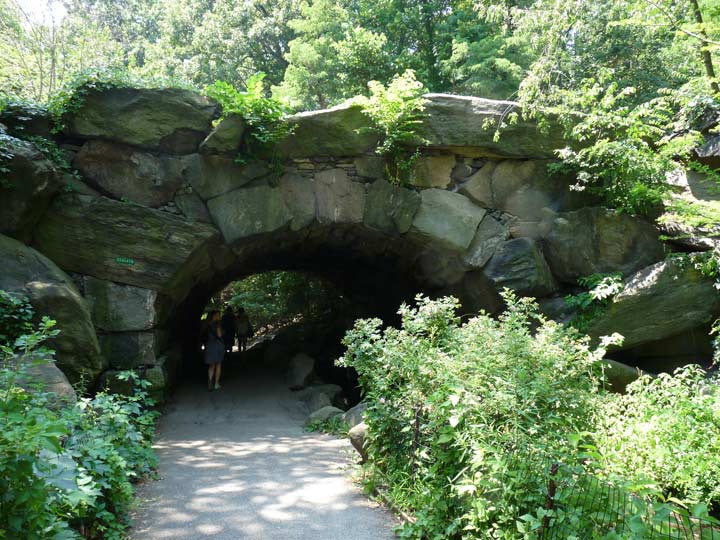To many observers, Huddlestone is the most remarkable ornamental arch in the park. From some angles, it resembles a natural cave. It rests on neither mortar nor metal supports and is made of immense natural boulders, some of which weigh up to 20 tons, or 40,000 pounds. It has withstood traffic from horses and buggies on up to the SUV era and carries the East Drive. It was designed in 1866 by Calvert Vaux and Jacob Wrey Mould.
Mould designed the ornamentation at Terrace Bridge, the plazas at Bow Bridge, the Ladies’ Pavilion on the west side of the park, and the Central Park Music stand, Belvedere Castle, and the carvings and mo(u)ldings at Bethesda Fountain.
He was born in Kent, England and became an architect at an early age. He co-designed the “Turkish Chamber” of Buckingham Palace, worked on the Crystal Palace in Manhattan. Late in his career he designed the Morningside Park promenade in 1883 and a temporary tomb for Ulysses S. Grant in Riverside Park, which was later supplanted by the present memorial.
Mould was also a pianist, organist, and a translator of librettos from Italian to English.
For more on Central Park’s arches, see this FNY page I wrote in August 2001.
9/9/16

